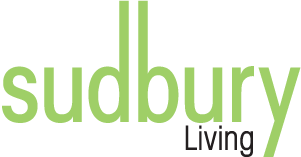Cambrian preparing students for rapid change
reprinted from Sudbury 2020: A Vision for the Future
The days of people getting a job and keeping it to get “the gold watch” are long gone, says Cambrian College president Bill Best.
Today’s college students are being prepared for rapid change. A 2020 graduate could have as many as 17 jobs during their working lifetime.*
“The new normal is that things will just keep changing,” says Best. He points out that boomers and members of their parents’ generation may have experienced one major shift in their workplace due to technology. Today’s workforce is experiencing change every three years.
He does not foresee “the end of work.”** Rather, he says he thinks there will be lots of opportunities for educated people with the right skills and right attitude about constant change.
Changes in the workplace could require people to require upgrading or retraining as often as every three years, predicts Best.
At the same time, technology has made the world small: we get news in an instant from anywhere, communicate with people across globe via the internet, and travel conveniently.
One way to train students about the world is through travel. Another way is “to bring the world to Cambrian,” says Best.
“We now have 1,400 International students from 32 countries and 75 percent of our program have students from around the world.
“How do you best teach people to be in a global economy? It is to create a global classroom,” that allows students to interact and make friends with people from other countries will lead to better understanding.
Knowledge of other cultures and countries is becoming an important skill, says Best.
“Both our primary mining companies are international. When you go to work for Vale, you are working for a Brazilian company. If you are from Azilda or Coniston, and you are going to work for that company, if you don’t have (international) experience, you are not going to be able work as productively.”
Best and his colleagues at Cambrian also are aware attracting international students to Sudbury has the benefit of growing the local labour force at a time when older workers are retiring and younger people are moving to the GTA and other parts of the country for career opportunities.
The Northern Police Institute reports “The city’s labour force is expected to decline by about 14 percent between 2013 and 2041.
“The international students want to come here and want to stay here…they fall in love with Sudbury.”
The Northern Policy Institute identifies the Indigenous labour force is expected to increase by about 10 percent, and this population’s education and training needs are of vital importance. In general, Indigenous people tend to participate in the labour force less than that of the total population.
The Northern Policy Institute in its 2017 Human Capital Series, Sudbury, said, “Evidence above suggests that one potential solution to Greater Sudbury’s declining workforce size and productivity is to promote higher education through increased access to services, especially for the Indigenous population who experience lower levels of educational achievement. One of the benefits of investing in education is a lower likelihood of unemployment and dependency on government transfer payments.
Cambrian has an Indigenous student population of 750, the third largest behind Algonquin in Ottawa and Confederation in Thunder Bay.
At Cambrian, “we do a good job of helping students feel comfortable in terms of our Wabnode Centre (for Indigenous Students). We have brought in general education courses around Indigenous culture, and we have a social service worker program with an Indigenous specialization,” says Best.
Another way Cambrian is meeting the needs of rapid change is by offering students flexible schedules.
The average age of today’s college student is 26. They generally have more responsibilities than a student coming directly from high school who may be living at home.
“There is a change from supply-side education to demand-side education,” says Best.
Students can enrol in programs that start in January, May or September.
“We are a college of 5,000, and we had 1,400 full-time students on campus in the summer, say Best.
Flex learning programs are offered for students to study part-time, in a real time virtual classroom from their home, or through e-Learning programs offered 24/7.
*“By 2040 half of all jobs that exist today will have been lost to automation and 40 percent of the workforce will be independent contractors. Graduates today should expect to have as many as 17 jobs in at least five different industries. Sixty-five percent of students in elementary school right now will work at jobs that have not yet been invented.
College president Peter Devlin, Fanshawe College 2019 annual report
“Ninety-one percent of Millennials (born between 1977 and 1997) expect to stay in a job for less than three years, according to the Future Workplace Multiple Generations @ Work survey of 1,189 employees and 150 managers. That means they would have from 15 to 20 jobs over the course of their working lives.”
Forbes, Aug. 14, 2012
**The End of Work: The Decline of the Global Labor Force and the Dawn of the Post-Market Era by American economist Jeremy Rifkin was published in 1995. Rifkin predicts worldwide unemployment would increase as information technology eliminated jobs in the manufacturing, agricultural and service sectors. He predicted devastating impact of automation on blue-collar, retail and wholesale employees.
Top hard skills valued in 2020
Cloud Computing
Artificial Intelligence
Analytical Reasoning
People Management
UX Design
Mobile Application Development
Video Production
Sales Leadership
Translation
Audio Production
Natural Language Processing
Scientific Computing
Game Development
Social Media Marketing
Animation
Business Analysis
Journalism
Digital Marketing
Industrial Design
Competitive Strategies
Customer Service Systems
Software Testing
Data Science
Computer Graphics
Corporate Communications
Source: Gregory Lewis, Linked In Talent Blog 2019










Comments are closed.